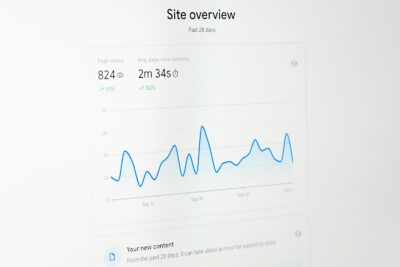Revolutionizing Decision-Making: How Edge Computing Transforms Real-Time Data Analytics
In the fast-paced world of business, real-time data analytics is the key to staying competitive. The ability to analyze data as it is generated can provide valuable insights, allowing organizations to make informed decisions quickly. However, traditional data analytics models often suffer from latency issues, where data needs to be transmitted to centralized servers for processing, resulting in delays. This is where edge computing steps in, revolutionizing the landscape of real-time data analytics.
Reducing Latency: The Power of Edge Computing
Edge computing brings data processing closer to the source, minimizing the distance data has to travel. By deploying computational resources at the edge of the network, closer to where data is generated, latency is significantly reduced. This enables real-time analysis of data, unlocking a plethora of benefits for businesses.
Accelerated Decision-Making
With edge computing, businesses can analyze data in real-time, eliminating the delays associated with transmitting data to distant servers. This empowers decision-makers with up-to-the-minute insights, enabling them to respond swiftly to market trends, customer behavior, and operational challenges. Whether it’s adjusting marketing campaigns on the fly, optimizing supply chain operations, or detecting anomalies in manufacturing processes, edge computing enables agile decision-making that drives business success.
Enhanced Efficiency and Cost Savings
By processing data locally at the edge, businesses can reduce the amount of data transmitted over the network, leading to significant cost savings in bandwidth usage. Additionally, edge computing allows for pre-processing of data, filtering out irrelevant information before it is sent to the cloud for further analysis. This reduces the burden on cloud infrastructure and optimizes resource utilization, leading to improved efficiency and cost reduction.
Improved Data Security and Privacy
Edge computing provides an additional layer of security by processing sensitive data locally. This reduces the risk of data breaches during transmission and ensures that confidential information remains within the organization’s control. With growing concerns about data privacy, edge computing offers a secure and reliable solution for real-time data analytics.
Edge Computing Applications in Real-Time Data Analytics
The applications of edge computing in real-time data analytics are vast and span across various industries:
Retail and E-commerce
Edge computing can be utilized in retail environments to analyze customer behavior in real-time, enabling personalized recommendations and targeted marketing campaigns. For e-commerce businesses, edge computing can optimize website performance by caching content closer to users, reducing page load times and improving the overall user experience.
Manufacturing and Industrial Automation
In manufacturing settings, edge computing can monitor equipment performance, detect anomalies, and predict maintenance needs in real-time. This proactive approach minimizes downtime, improves productivity, and reduces maintenance costs. Edge computing also enables real-time quality control by analyzing sensor data to identify defects and ensure product quality.
Smart Cities and Infrastructure
Edge computing plays a crucial role in smart city initiatives by enabling real-time analysis of data from various sensors and devices. This includes traffic monitoring, environmental monitoring, public safety surveillance, and energy management. By processing data locally, edge computing enables faster response times to critical events, improves urban planning, and enhances the overall quality of life for residents.
Healthcare and Life Sciences
In the healthcare industry, edge computing enables real-time monitoring of patient data, early detection of anomalies, and personalized treatment plans. Edge computing also facilitates telemedicine by reducing latency in video consultations and remote monitoring of patients. This improves access to healthcare, especially in remote or underserved areas.
The Future of Edge Computing in Real-Time Data Analytics
As technology continues to advance, the role of edge computing in real-time data analytics will only become more prominent. With the rise of 5G networks and the increasing number of connected devices, the volume of data generated at the edge will continue to grow exponentially. Edge computing will be essential in managing this data deluge, providing the necessary computational power and storage capacity to process and analyze data in real-time.
Embracing the Edge: A Strategic Advantage
Businesses that embrace edge computing for real-time data analytics will gain a significant competitive advantage. By leveraging the power of edge computing, organizations can unlock valuable insights, make faster decisions, improve operational efficiency, and enhance customer experiences. As the world becomes increasingly data-driven, edge computing will be the key to staying ahead of the curve.
Innovation and Growth
Edge computing opens up a new frontier of innovation in real-time data analytics. As businesses explore the possibilities of edge computing, we can expect to see new applications and use cases emerge. From personalized medicine to autonomous vehicles, edge computing will drive innovation and growth across various industries, shaping the future of business and society.
#edgecomputing #realtimedataanayltics #bigdata #businessintelligence #digitaltransformation #Industry40 #IoT #5G #cloudcomputing #datadriven























